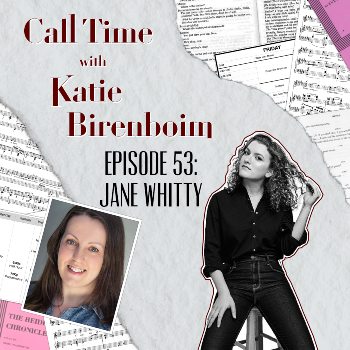
It seems to have become some sort of Call Time tradition that every year, in November, I interview one of my marketing professors from NYU on the subject of how the arts are or aren’t marketed appropriately. Last November I had the pleasure of interviewing Professor Jeffrey Carr, former Executive Director of the Berkley Center for Entrepreneurship and Innovation, and former Director of the Fashion and Luxury Lab, at NYU Stern. While a lifelong fan of the arts, Jeff’s experience was in for-profit marketing. It’s why I jumped at the chance to interview my “Marketing for the Performing Arts” professor this semester, Jane Whitty, who has experience working in the marketing/PR departments of various theaters and is now a Senior Consultant at Capacity Interactive, the premier digital marketing consulting firm for culture and the arts.
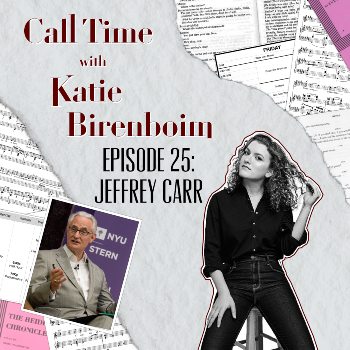
There’s a lot to unpack in that description for anyone who may be unfamiliar with the organization and its mission. Capacity is first and foremost a consulting firm, not a producing organization in itself, so it takes on various clients from the arts and culture world to advise them on their marketing strategies and campaigns. This client list is a veritable who’s who of the arts industry, including organizations like The Kennedy Center, Alvin Ailey American Dance Theater, New York City Center, the Guthrie, Jazz at Lincoln Center, New York City Ballet, The Public, The Moth, Steppenwolf, the Boston Symphony Orchestra, the Rubin Museum of Art, and many more. But what exactly does Capacity do for this incredible list of clients? As described above, the firm focuses on digital marketing only, which translates to advising on digital advertising (Facebook, Instagram, Display, YouTube, and other paid search campaign advertisements), website analytics and optimization, search engine optimization (also known as “SEO”), email best practices and guidelines, and organic content creation.
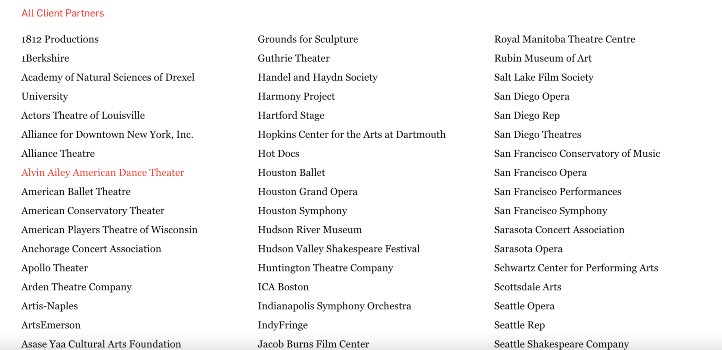
As not much of a “technology” person myself, staring at a list of words I associate with software engineers and “people in Silicon Valley” gives me a little bit of anxiety. My internal monologue goes: if I’m running an arts organization, and I’ve studied and worked in my field for years, why do I need to know about SEO, Google Grant, and all of these other tech-y buzzwords? And indeed, during our conversation, Jane shared that in her initial days at Capacity Interactive — she was employee #5 — a large portion of her job meant convincing clients of the importance of investing in digital marketing. Organizations, especially arts organizations that have been around for years, enjoyed consistent notoriety, and, most importantly, operate on extremely limited budgets, understandably could take the above perspective: advertising on Instagram could feel oh-so-millenial…even Gen Z, and just not worth the time or the resources. Why should an organization start a Tik Tok when it can be safely assured of billboards, postcards, mailing lists, and can barely pay for those initiatives in the first place?
Fortunately, people like Jane and her colleagues at Capacity Interactive have a great deal of data to back them up. Social media is a consistent driver of arts revenue: 90% of arts ticket buyers use YouTube, 66% use Facebook, 43% use Instagram, and 11% use Tik Tok according to a Capacity Interactive Ticket Buyers Study.
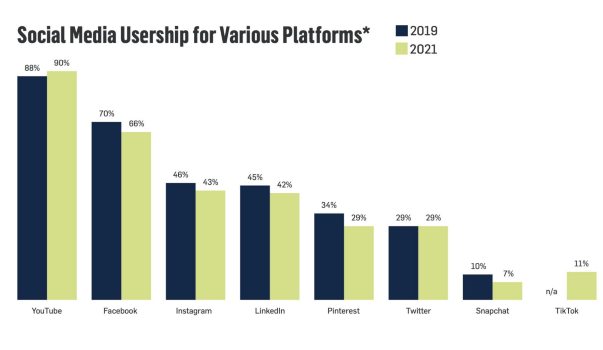
What’s more, email is far and away the primary way that arts audiences report awareness of a program, event, or organization — beating out direct mail, critical reviews, word-of-mouth, and print ads by a longshot. In fact, 86% of respondents reported initial awareness from email, and 40% from social media posts generated by the arts organization, according to that same ticket buyers’ study. Taking Jane’s class has immersed me in the world of arts marketing data: at nearly every turn she recommends use of Google analytics audience, acquisitions, behaviors, and conversions reports, SEM (search engine marketing) and SEO analysis, Facebook and Instagram insights, and YouTube analytics to help determine your KPIs, or “key performance indicators.”

As you can see — and imagine — Jane is not afraid to get “granular,” as she describes it, or “in the weeds” of arts marketing data, while remembering that all of this hyper-specific, numbers-oriented study is in the service of a bigger, broader picture, and the astute arts marketer must not be afraid to zoom out. Indeed, in our conversation Jane describes how all of these analyses and digital strategies ultimately align in the service of a simple goal: to help arts organizations tell a better story. Not only that — but a smart digital arts marketing campaign ought also to broaden its audience, or, to use marketing speak, the “segment,” to which the organization appeals. In discussing some of the things that Jane feels arts marketers get wrong, she describes how the industry can sometimes still orient mostly to “return customers,” in other words, people who have seen a show at your organization or, even more broadly, know what a show is and what the experience will be like. In our interview Jane argues that the key question facing arts marketers in 2022 is: “how do we tell our story, and market an experience, not a commodity, to someone who may be completely unfamiliar?”
In this way, any discussion of arts marketing, even a hyper-granular discussion of KPIs, SEO, and the Google Grant program, aligns with broader themes like equity and access. In 2022, not only does the industry face increasing “competition with the couch,” exacerbated by the pandemic and its effects, but potential arts audiences also still contend with major barriers to entry. Furthermore, once we get people in the door, we may never see them again: the arts have some of the highest rates of what we call “churn” of any field: 60% of performing arts attendees will never return, according to a 2017 Jacobson Consulting Applications study.
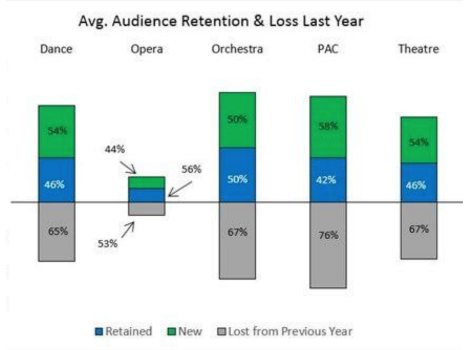
While arts education, audience development, and community engagement are of course important in broadening access to the arts and audience retention, as the primary driver of arts revenue, Jane argues that marketing departments have a major role to play. It’s another thing I appreciate about Jane: while hyper-specific, she always grounds our discussions in the bigger picture, even in politics. Indeed, in my interview, Jane and I discuss the desire to reach more people, and therefore achieve better segmentation as an arts marketer, against the backdrop of new privacy policies, which will make it much more difficult to mine key information from our audience and users. Similarly, we discuss recent developments at Twitter, and what that could mean for the digital arts marketing landscape. While we come to no broad-based conclusions on the subject (it’s my guess that it will take a Met Opera or a Public Theater to leave the platform, and others will follow), it’s further proof that the arts cannot and should not be siloed from the rest of the world. Like it or not, the arts are political — yes, even the data.

Listen to our full episode, where we also discuss theatre in LA (there’s not much of it!), starting a company in 2008, new arts pricing strategies (like Ars Nova’s “name your price” ticketing model), branding, and ethical social media use, during which I argue that marketing an arts organization — even if it’s on Instagram — is different from marketing, say, “flat tummy tea” (hint: it is!).


Leave a Reply